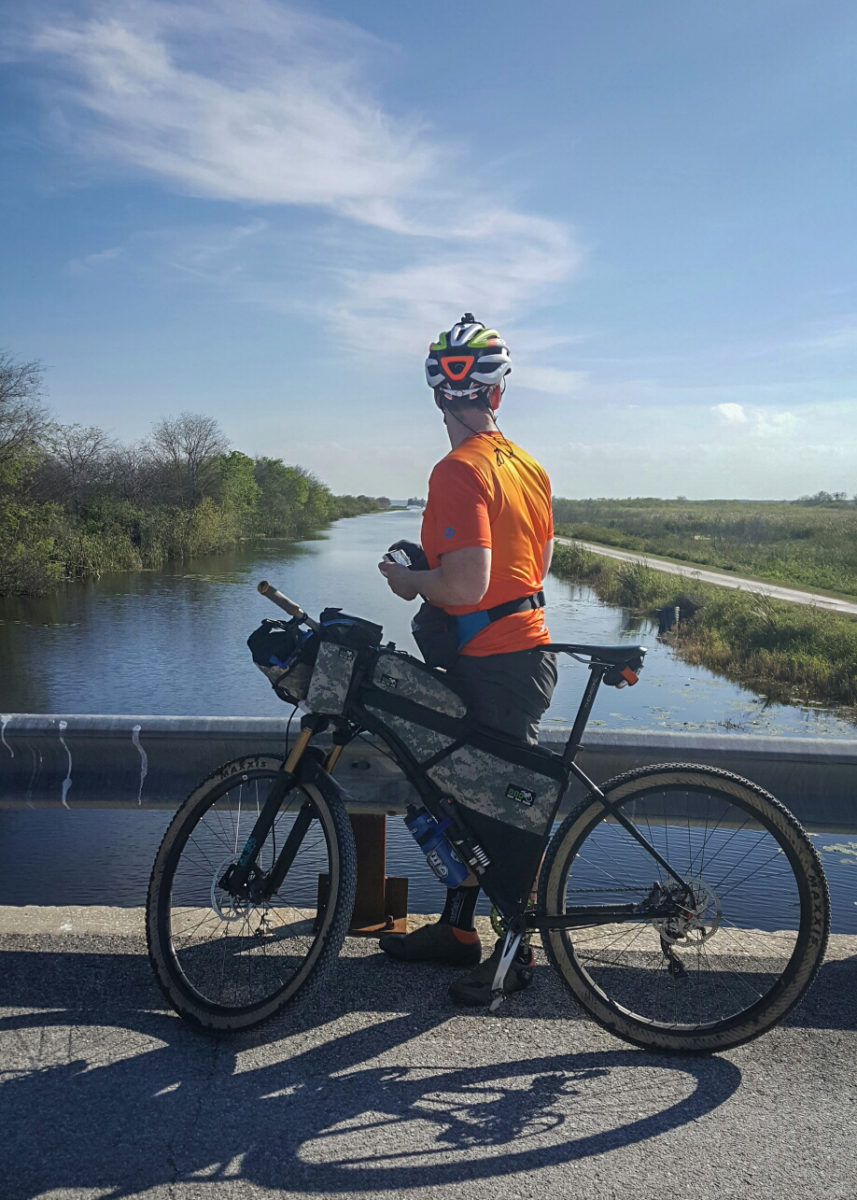
I will go to great lengths to avoid using a hydration pack. This includes strapping tools, pumps, and tubes to my frame; shoving water bottles in jersey pockets, or even going without. This works for shorter rides close to home, but it’s not practical for long days in the woods. Sometimes the need to bring extra food, tools, or clothes necessitates a pack.
As I geared up for the Huracan 300 early this year, I was looking for something that could safely carry my camera, while also keeping it readily accessible. High Above’s Cascadia pack looked to be an ideal solution, so I reached out with a list of questions. John Canfield, the owner of High Above, responded right away with an offer to send one out for review.
[see_also id=”207483″][/see_also]
Specs
High Above is based in Bellingham, Washington, a hotbed of Pacific Northwest mountain biking, and home to Kona and Transition. High Above is a one-man show with John designing, sewing, and testing his packs there in Bellingham. In fact, all the components – save the buckles and mesh – are made in the USA. This includes the waterproof Dimension Polyant sailcloth shell, the sturdy YKK zippers, the foam backing, the webbing used for the belt, and the clip that holds the “Bottle Rocket” pouch to the pack.

The Cascadia is the largest of the High Above packs with dimensions of 12.5″ x 3″ x 5.5″ (LxWxH). The length might be an issue for skinny riders, but with a 34″ waist, it worked well for me. Until just recently, High Above made only two packs: the Cascadia and the smaller Das Radpack. However, they’ve just released a third pack to their line, the Lookout. The Lookout lands somewhere in between the two in terms of volume, and adds an external zippered pocket, perfect for stashing your phone. Pricing for Das Radpack starts at $60, the Cascadia at $75, and the new Lookout at $80. The Bottle Rocket pouch can be added to the Cascadia or the Lookout for $10.

The large YKK zippers run all the way to the edges of the pack allowing easy access to the pack’s main compartment. Inside the main compartment are two smaller pockets, along with a lanyard to clip your keys to. High Above chose 1.5″ webbing for the waist belt, which is wider than the 1″ webbing found on most commercial packs. To keep pokey things like multitools from jabbing you in the back, there’s a thin piece of foam separating you from the pack. It’s covered in a layer of mesh to improve breathability.


On the Trail

I received the Cascadia pack just in time for the Huracan. I used it to carry my small, interchangeable lens camera, but the spacious pack left room for other items I wanted to keep handy like sunscreen, chapstick, chamois cream, and a rain jacket. It’s hard to beat a hip pack for convenience. With a quick twist, I could pull the pack around to the front and easily grab whatever I needed, even while riding. Thanks to the beefy zippers and extra long paracord pulls, fumbling was kept to a minimum.
The exception to that was the water bottle – I had to come to a full stop to remove and replace it. Initially I was skeptical the friction fit would be enough to keep the bottle from bouncing out, but that was not the case. The pouch is just big enough to fit a standard water bottle. In my experience, taking the bottle out or putting it back required two hands. Shorter bottles work best in the Bottle Rocket, as taller 26oz bottles had a tendency to flop to the side. John has revised the positioning of the Bottle Rocket for the Lookout pack in an effort to eliminate the flopping and will be updating the Cascadia in the same manner.

During the Huracan, I wore the Cascadia for around 40 hours, and never got tired of it. Even packed out, the weight isn’t noticeable thanks to the Cascadia’s wide waist belt and low positioning. Since the Huracan, it’s accompanied me on just about every ride. I’ve found that I just leave the basics (tube, pump, multitool, patch kit) in it at all times so when it’s time to ride, all I need to do is fill up a water bottle and grab a bike. For longer rides, I supplement the basics with some snacks, a jacket, arm warmers, a beer or two, etc. — whatever the ride that day requires.
Finish Line
So far the Cascadia has shrugged off a 340-mile ride, sand, rain, mud, and a crash (or two). The zippers are still pulling smoothly and the sailcloth material is just starting to break in. This is a pack built to withstand years of on-trail abuse.
The Cascadia hip pack has become an indispensable part of my riding kit. I can now carry enough food, water, and gear, to get me through 75% of my rides, almost eliminating the need for a hydration pack. It has also cut my ride prep time down significantly – I’m no longer digging through dirty jersey pockets searching for a misplaced multitool.
If you want to ditch your hydration pack and replace it with a well-made, durable, American product, give High Above a look.
Thanks to High Above for providing the Cascadia for review



















